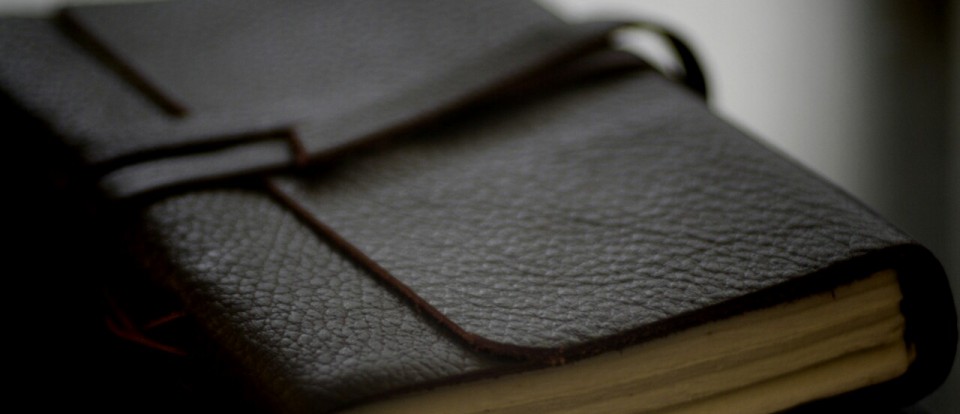The shallow depth of field on close ups is something I liked very much from the start. I imagine it was the basic reason I mostly used “normal” and small (and big) telephoto lenses (over the years, the 35mm view grew up on me and now I tend to prefer focal lenghts from normal to wide). A little reading about shallow depth of field brought up the will to dive deeper into medium and large format. I say ‘deeper’ because the Kodak box cameras I had, the Ensign ful vue and some other medium format cameras (except the Lubitel) could not give me the package I was after. I wanted ground glass focusing, lenses, backs. An excuse to look into and buy more cameras.
I had my eyes on a big tlr, an slr and a view camera. I swapped 6 cameras for a Mamiya C330, I lusted for a Hasselblad but bought a Salyut, got a Graflex Century Graphic and made a big box to use two cut film 8×10” holders and a 10” lens. The ladder nearly fell over from the weight…
I bought a “work” handbook titled: “Photographic Cameras and Accessories – comprising how to make cameras, dark slides, shutters and stands” by Paul N. Hasluck, written in 1901 and reprinted by Lindsay Publications Inc. In order to build a camera like the ones described in the book, you need to have the tools and be a qualified handyman and precise person. I don’t have the tools and even as a handyman I’m not that precise. So the DIY “proper” view camera did not even start. But the chapter on Ferrotype cameras gave me an idea: A simple matchbox like camera. Mount a lens to the bigger front box and a cut film holder to the smaller sliding back box.
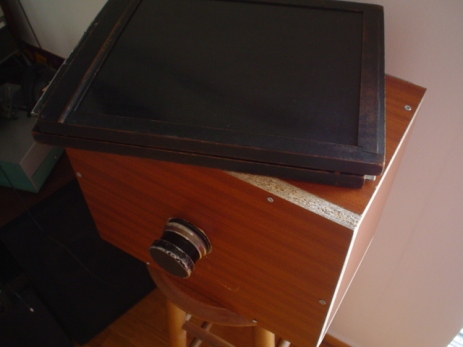
8×10” (Sony DSC-P32)
Went to a local glass shop and had a frosted glass cut to mount on the back for ground glass focusing…
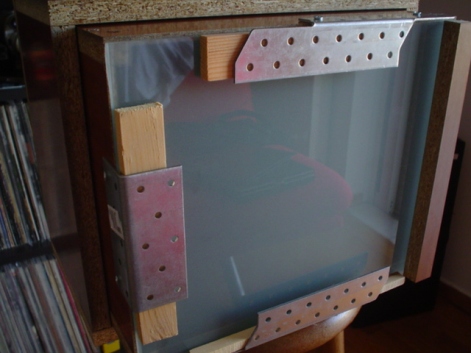
8×10” (Sony DSC-P32)
The lens was a Wollensak 10” f8 Tasope and I had 2 8×10” kodak wooden cut film holders that I had bought extremely cheap… (I figured it out when I sold them).
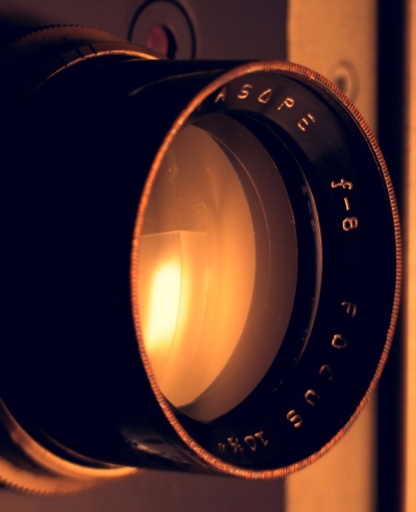
Wollensak 10” f8 Tasope lens (Pentax istDL)
The price of 8×10” sheet film was (and still is), too high to waste (?) on a camera like this so I used photographic printing paper. You load the paper in the cut film holder, expose and develop in darkroom tanks like you would if you printed it using a darkroom enlarger. The negative you end up with, can be contact printed (as long as the paper is plain on the back side and not with brand logo) or scanned/digitally photographed and reversed to get a positive.
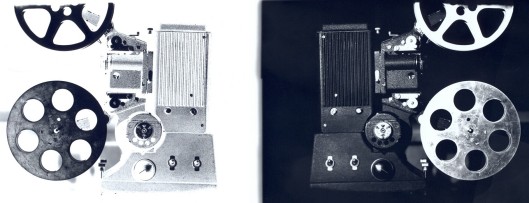
Specto model A 16mm projector (8×10 inch, Wollensak Tasope)
The Mamiya C330 is a beast. I still love it’s shape, the ability to change lenses and it is one of my favourite cameras to see. I had the normal 80mm and the 180mm telephoto lens. A great camera but if you want a tlr and just a normal lens, perhaps you are better with a smaller lighter camera. You can’t walk around for long with a Mamiya C330 on the shoulder. Depends on the shoulder of course…

a morning (Mamiya C330/Mamiya-sekor 80mm/Fujichrome sensia 100)
The Graflex Century Graphic 2×3” is a folding view camera. Its lens was a Graflex Trioptar 103mm f4.5. A three element lens with nice rendering. Many consider the three element lenses junk. I disagree.
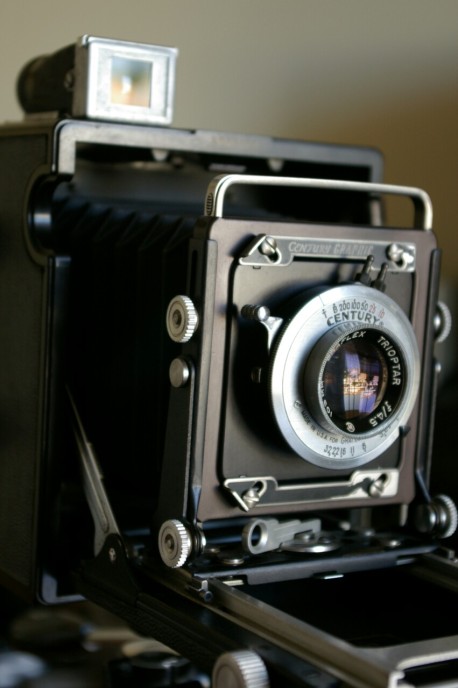
Graflex Century Graphic 2×3” (Pentax istDL)
A lovely bakelite and metal construction, with some movements, very light for a 2×3” but a camera you can’t use without a tripod (unless it has a rangefinder). I only shot one roll of Ilford fp4+ with the Century Graphic, my 4 year old then nephew. I don’t post photos of children on the internet. The images came out great.
When you have the camera virus, you look at cameras and say: “I wish I had a Hasselblad or a Rolleiflex or a Leica… etc. But they are too expensive and I can’t afford to buy one.” You are right, the cost is high -not like it used to, thanks digital- but still is. The camera buying virus is the one playing the joke here, because when you add what you have spent on your small collection, you realize that actually, you could buy one. But you still don’t learn. And why learn? As Antonis (my companion on the photographic journey) so wisely said: “nobody escaped… eventually you will buy a Hassy or a Rolleiflex or a Leica, maybe one of each… That does not mean you will be a better photographer though…”
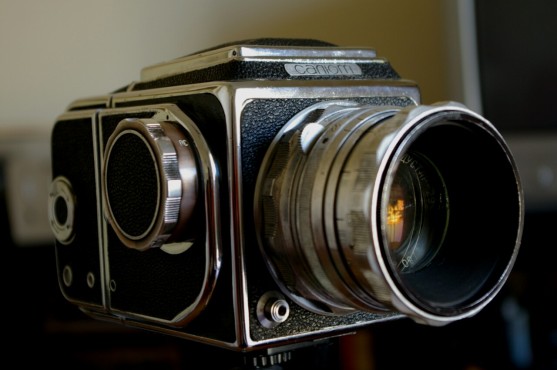
Salyut with Industar-29 (Pentax istDL)
I did not get a Hasselblad back then. I got a Salyut. An early 60’s model that worked as it should.
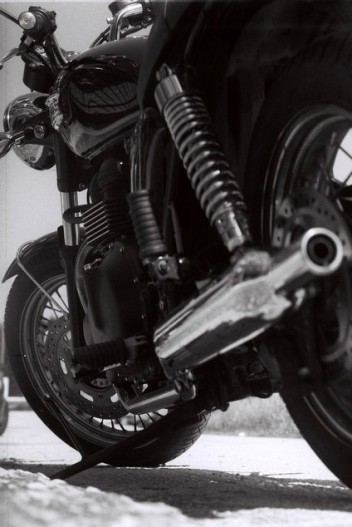
The Bonnie (Saluyt/Industar-29/Ilford fp4+/cropped)
Soon I found myself with the chimney finder, the nc2 prism, macro rings, the Mir-3 65mm f3.5, the Tair-33 300mm f4.5, the Vega-12V 90mm f2.8, the MC Telear 5V 250mm f5.6 and my first camera backpack to fit them all in. Then I lifted it up. I never left the house with it all.
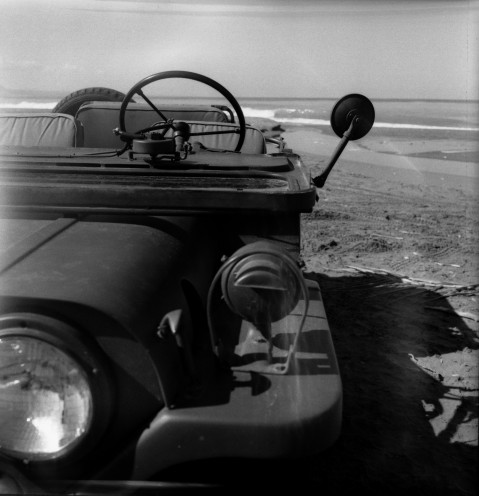
M151 A1 (Salyut/Industar-29/Ilford fp4+)
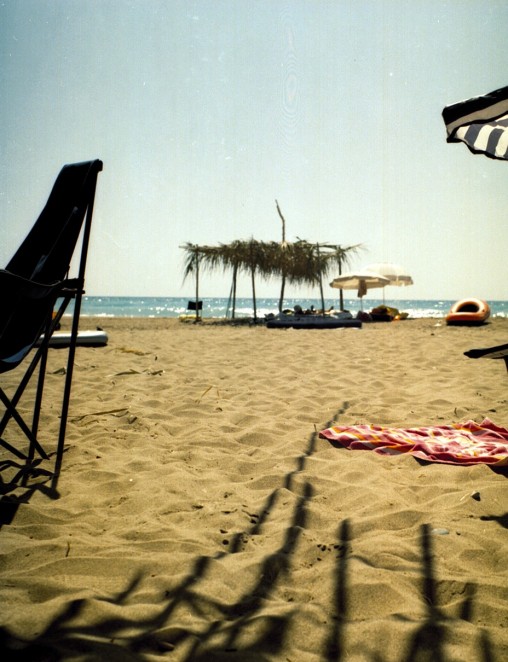
vacation (Salyut/Industar-29/Fuji100/cropped)
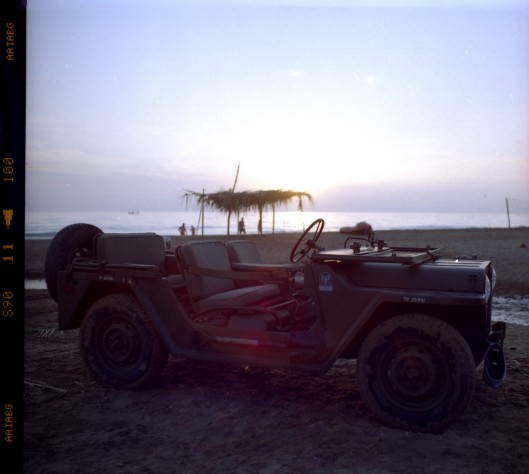
on vacation with a M151A1 (Salyut/Mir-3/Fuji100)
The only extra lens I should have for the Salyut had to be the Mir-3. The normal and the wide angle was enough. Maybe then I would have kept it.
Before I parted with the Salyut, I had traded the Mamiya C330. It was one of my famous ‘how to lose money’ moves. I had open matters with large format (or so I thought) and I gave the C330 to get a Calumet CC400 4×5” monorail. I had issues dragging the Mamiya around and I got the Calumet… go figure…
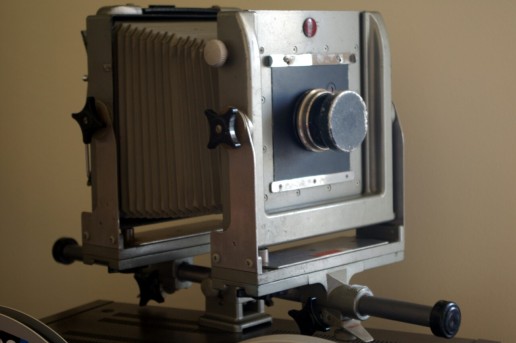
Calumet CC400 with the Wollensak 10” f8 Tasope lens (Pentax istDL)
I still laugh when I think about it. I made some exposures on the Calumet basically on photographic printing paper and one almost successful on Fomapan 100 sheet film.
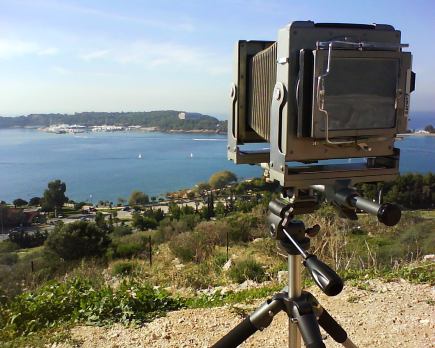
Calumet CC400 (Sony Ericsson W350i)
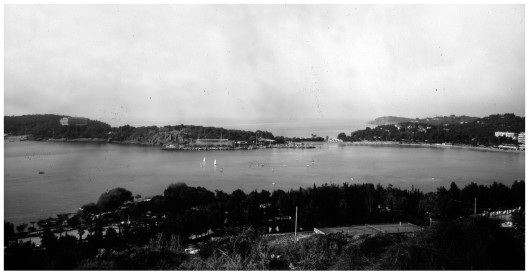
Vouliagmeni (Calumet CC400/Wollensak Tasope 10”/Fomapan100/cropped)
I had some good time with it but it did not last long. It was not the Calumet’s fault. A very steady, built to outlast us camera with a USN sticker… I was too “young” for it and for developing 4×5” on an FFR tank…
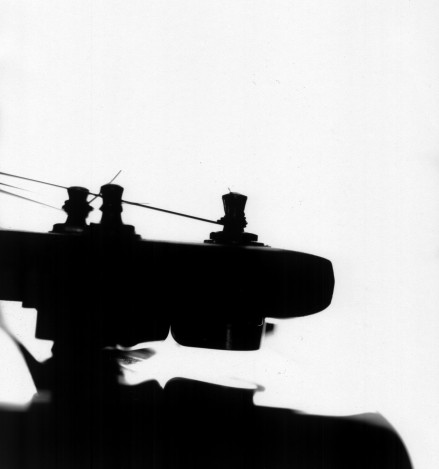
the guitar (Calumet CC400/Schneider-Kreuznach Xenar/paper)
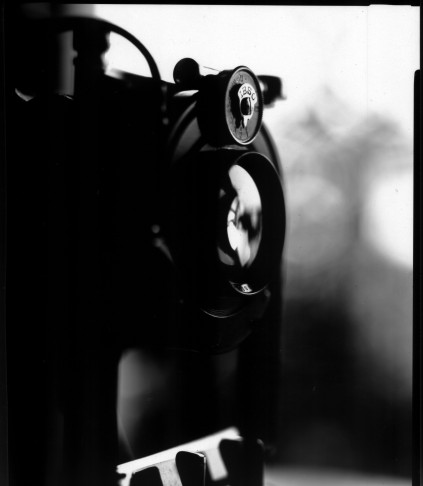
Ica (Calumet CC400/Schneider-Kreuznach Xenar/paper)
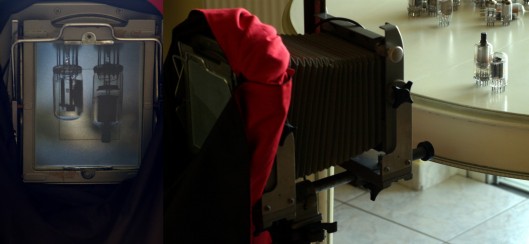
Calumet CC400 (Pentax istDL)
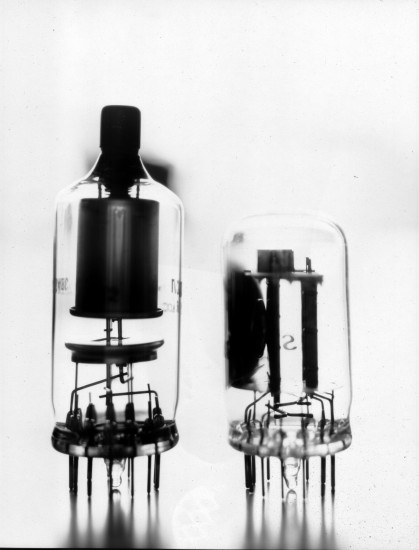
pair (Calumet CC400/Schneider-Kreuznach Xenar/paper)
All these years I usually try more than one camera before deciding if I want to go further with a format. Before I parted with the Calumet, I had bought another 4×5” of a more “portable” design. A Burke & James Press 4×5”. A nicely build camera with a rotating spring type back like the Calumet. A folding view 4×5” camera, capable if you care to get into it. Most prefer the Graflex Speed Graphic, or a Crown Graphic or an MPP in this price range (the Linhof and the others go up scale). For me, the Speed Graphic, though heavier, is more versatile because you can also use barrel lenses. But it was more expensive, the B&J was a bargain -if you live outside the US you have to take into account the shipping & import cost also.
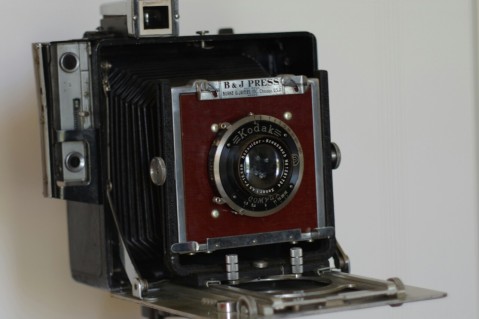
B&J Press 4×5” (Pentax istDL)
As the Mamiya C330, the B&J also did not get the time it deserved, for different reasons. The two major drawbacks for me and 4×5” were the cost & developing of sheet film and the necessity of the tripod. The tripod is something I rarely use even now. As for developing, I wasn’t aware of the more easy ‘Taco’ method to try, I had no luck with the FFR developing tank and a Nikkor 4×5” tank was too expensive. I was even less experienced in developing, and for 4×5” to show its potential you have to be very very precise and give it the time and attention it needs both in shooting and in developing.
The Calumet CC400 and the Burke & James Press 4×5 were sold along with the lenses the FFR tank and rest 4×5 stuff. Needed to make room and build a cash amount for other cameras. The last to go, were some Fidelity 4×5” holders and a red dark cloth for the focusing aim on the ground glass. These were bought by Antonis, an experienced amateur photographer who became a good friend and companion to this ongoing photography journey.
The last 4×5” camera I bought -and gave to Antonis as a present- was a Graflex RB 4×5” . An slr 4×5”. I love the Graflex slr’s. That’s a future musing.
I wish 2019 to be a better year than the one we left behind.
Nasos Papathanasiou
